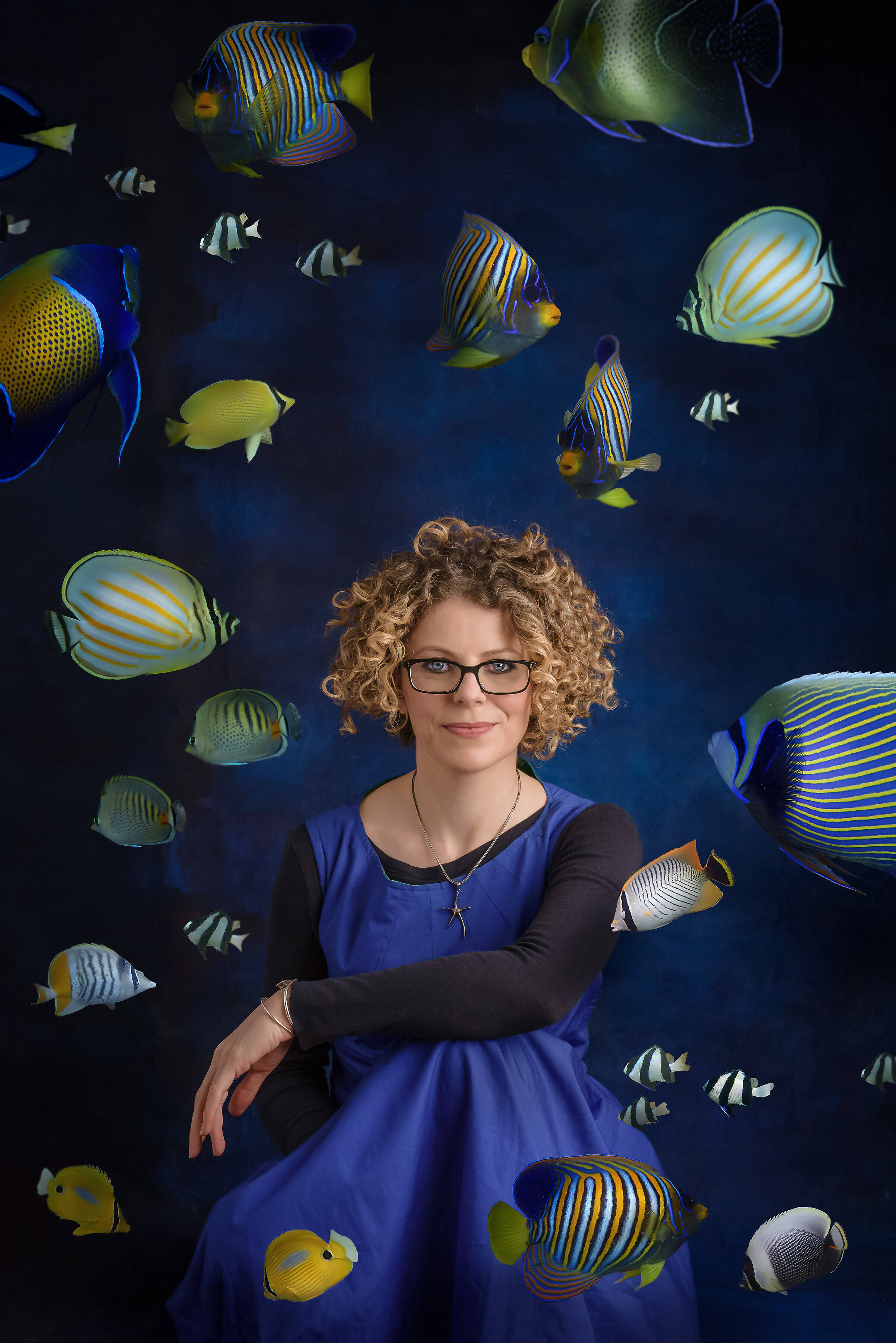
Dr Helen Scales on What a Shell Can Tell
Going to the beach this summer? This brilliant marine biologist can help kids unlock the sea’s wonders via the shells on the shore
Lots of clear blue water separates Dr Helen Scales, the brilliant British marine biologist, documentary maker and author, from her childhood self: a young girl who just loved to explore the beaches of Cornwall. In her adult life Dr Scales has travelled the world, written a number of best selling books, contributed to National Geographic, New Scientist and the Guardian, appeared on the BBC and taught at Cambridge University. Nevertheless, Scales can still recall the joy and wonder she used to feel, finding shells on the shores of Britain during her family holidays.
In her new kids book, What a Shell Can Tell, she shares both that childhood wonder and grown-up knowledge with young readers. Ahead of its publication, we spoke with Helen about her early enthusiasm, her greatest adventures, her hopes and fears for the ocean, and her top tips for amateur shell collectors, taking to the coast this summer.
Your book approaches a big subject – marine biology – via a little object – a shell. Did shell collecting pique your interest in marine life? There’s no doubt that visiting the seaside and picking up shells played a big part in me becoming a marine biologist. I went with my family to Cornwall (SW England) pretty much all the time. I would be by the sea as much as possible. The shells I loved the most were the sea snails in rock pools; those pools were like mini rainforests.
Marine biology often comes pretty high on the list of school kids’ top career ambitions. Was it always the life you wanted to lead? I haven’t tracked the data, but, yes, I have noticed a huge interest in marine biology. There's a huge amount of interest in the sea, I suppose, and I think there's a greater awareness of nature and the problems we’re causing. I can see why studying the oceans is up there with other childhood ambitions, such as going to space! For me, the real career choices came a bit later. I was always outdoorsy, and in my teens I thought I would study rain forests and help save them, but then I just got really turned onto the idea of being in the sea. I learned to scuba dive and that sealed the deal for me, that’s all I wanted to do.
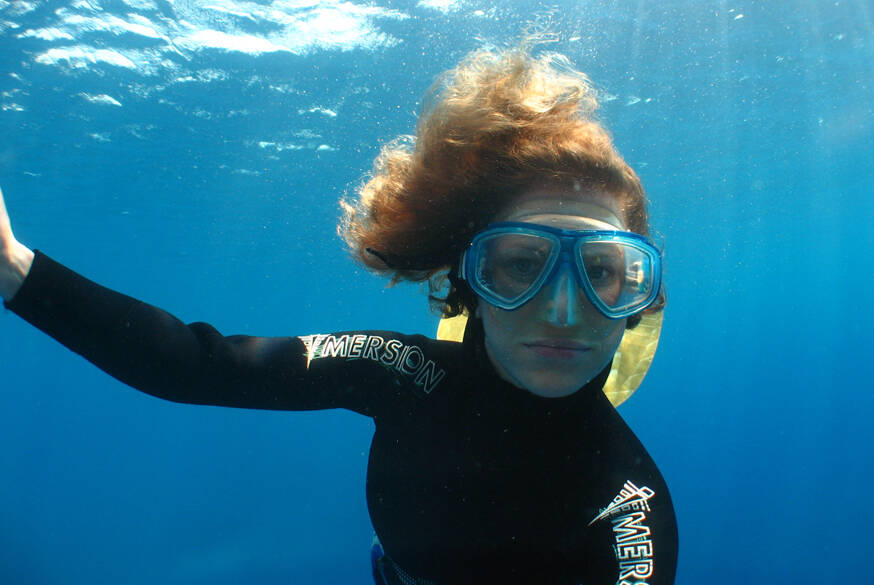
Dr Scales scuba diving. Photo by Brian Crossland
In the past you’ve written very successful books for adults, and you teach at the University of Cambridge. How do you change your approach, when addressing a younger audience? I don’t change that much, but I do try to nurture that sense of wonder and wanting to know what’s out there in the oceans. That’s universal. Whoever I’m talking to, that’s what I try to get across: how beautiful it is down there and now extraordinarily lucky we are to have this incredible source of life on our planet. Often it is just a case of showing them, just look at what it is and what it can be. With children’s books, one of the great opportunities is to collaborate with artists, such as Sonia Pulido who illustrated this one, in ways that really enhance these ideas and messages. With children’s books there are fewer words, but there’s a greater crossover with words and pictures, which I don’t really get with older audiences.
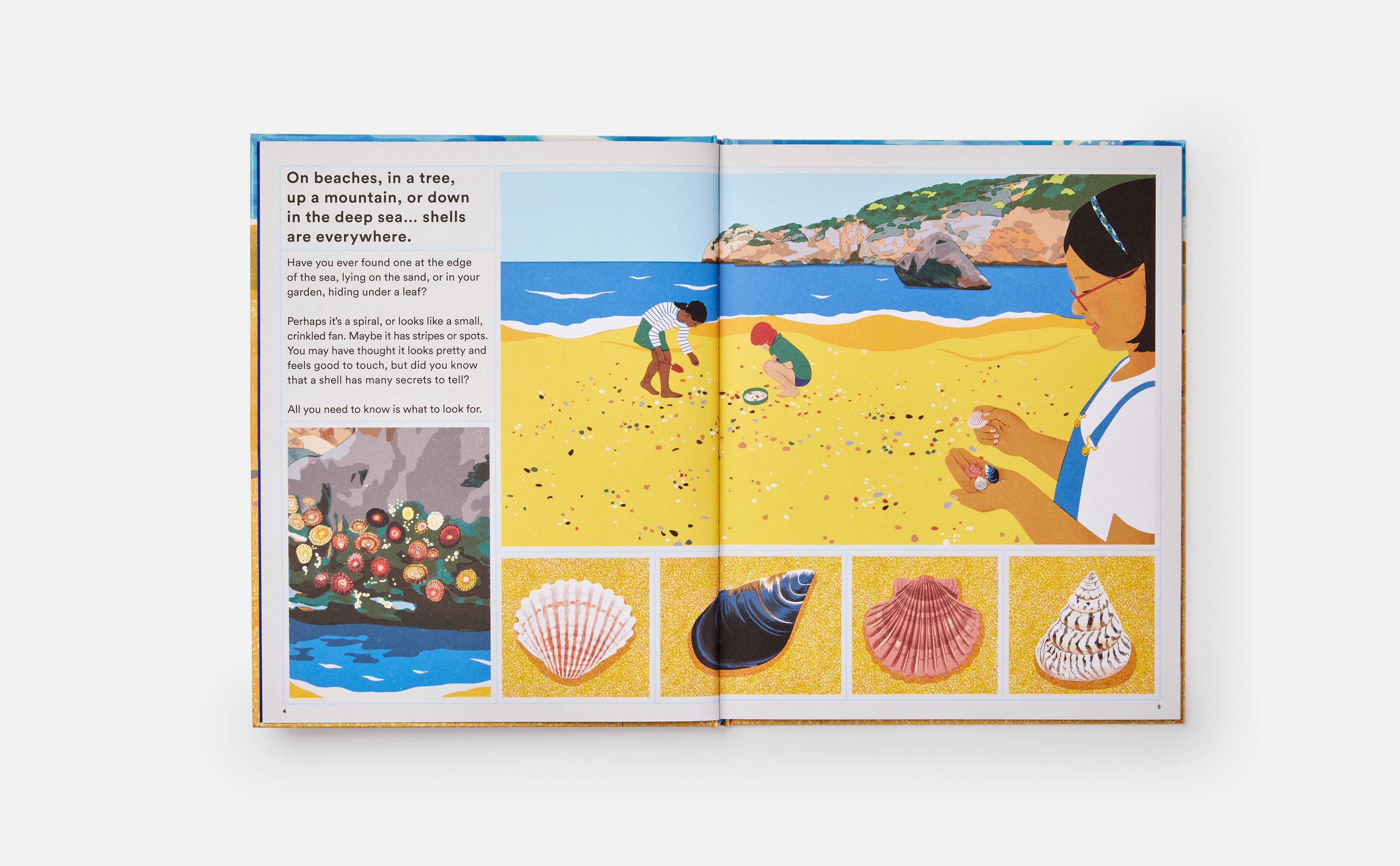
Pages from What a Shell Can Tell
People have been collecting and studying shells for a very long time, but your book makes it clear this body of knowledge isn’t fixed. Where do the great mysteries concerning shells currently lie? Where’s the really exciting research taking place? There are lots of different areas: everything from what lives down there, to how the ecosystem functions. We know about the extent of plastic pollution, but we don’t really know about the impact on the ecosystem, or its long-term consequences. Then there’s also the deeper parts of the sea. We’re still really opening up the deep ocean – and that’s from a few hundred metres down to the deepest part, which is 11 kilometres deep. It's a hugely diverse place, and there are some amazing organisms that live down there, including some cool seashells. We’re simply going out and finding new species all the time. Send down the diving robot and you’ll see something new. We’re learning what’s there, how ecosystems work, and how humans are disrupting them. Life is all connected.
There’s a really wonderful mystery concerning the patterns on shells. You describe it in your book, could you outline it here too? There are whole loads of shells with great, geometric patterns – zigzags and stripes and so on. However, these creatures live in the sea bed, and so they can’t be seen by anything. The pattern can’t be a camouflage, or a way of messaging another species. The theory is that the creature is actually leaving a memory, or note on their shell, to help them to remember how to build more of it.
You see, the key to this is knowing that snails and bivalves keep their shells their whole lives; they just add more material to their shell making it bigger as they grow. This is not a continual process. They create their shells more quickly in the summer, for example, when they’ve got a lot of food; and in the off season they’ll stop. So, they need to know where to carry on, otherwise their shell would grow all over the place and would be a wonky mess. The patterns on the shell could be chemical markers that allow the animal to line themselves up again and carry on making more layers of shell. It’s just a theory though, we don’t know for sure.
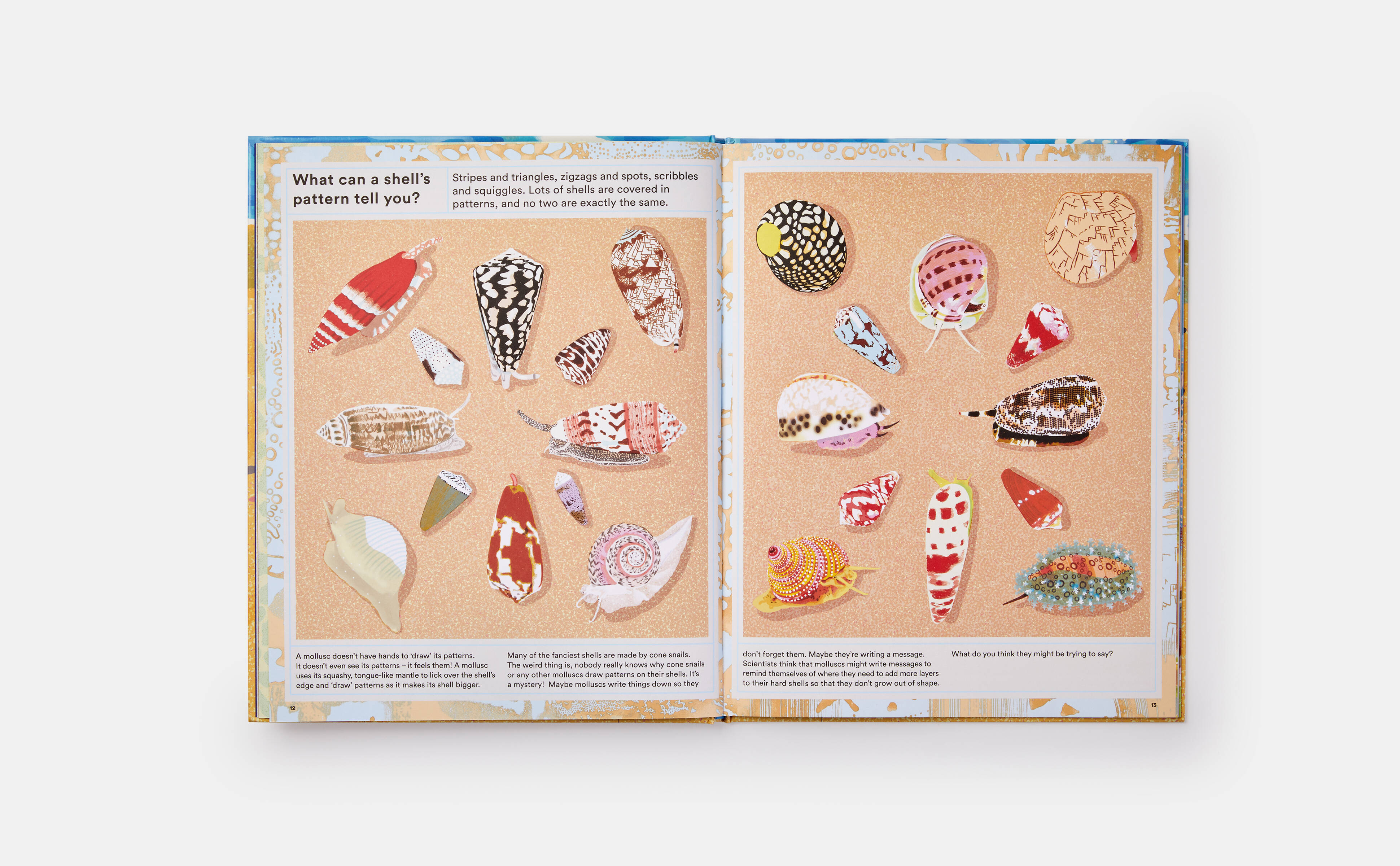
Pages from What A Shell Can Tell
In the back of the book you describe yourself as an explorer. When did you come to think of yourself like this? Which of your research trips rank as your greatest adventure? I went to an incredible mangrove forest in Madagascar called the Bay of Assassins, which is an extremely remote part of the south west; we were looking at how the forest is changing and how people are changing it. I saw people harvesting hermit crabs, which I have never seen before; it was an incredibly beautiful place to go. A lot of my other work is on coral reefs, which are also incredibly beautiful, diverse places. Most recently I went to a tiny island in the Pacific called Palau, which is very well preserved; there’s a strong conservation movement there to protect the reef from overfishing. It really was extraordinary to see so much life, so many big fish, big sharks and turtles. And I’ve seen some bad stuff too. I’ve seen plastic pollution all over the place; I’ve felt a bomb go off under the ocean, because some fishermen are so desperate, they’ll blow up the fish; but I’ve also been to some places like Palau which are very well preserved. It’s made me realise there's so much worth fighting for.
Who are you heroes within marine biology? Who do you really look up to? Oh, I have lots. I really admire Sylvia Earle. I’ve been fortunate enough to meet her a few times and I’ve been absolutely blown over by her. She’s worked very hard to raise awareness of the oceans, and she was the first to live underwater for a week with the first all-female team, I think that was back in the 1960s; she is really awesome and she’s still fighting for the ocean. I was also really lucky to meet Eugenie Clark, she’s passed away now, unfortunately; she was known as the Shark Lady. There are many people out there, especially women, doing very good work at the moment.
One of the strangest bits in your book is your description of a hermit crab party, where the crabs swap shells. Have you ever seen this happen? I haven’t seen a very orderly line, though I have seen them clustering together, but they definitely get together to work out who can use which shell when they get too big for the one they’re in. These crabs don’t make their own shell, they just borrow empty sea shells, so when they need to grow their bodies bigger they get a bigger shell. There can be so many hermit crabs around that there aren’t many free shells. So they get together into a line, with the smallest at one end and the biggest at the other, and everyone moves up one shell!
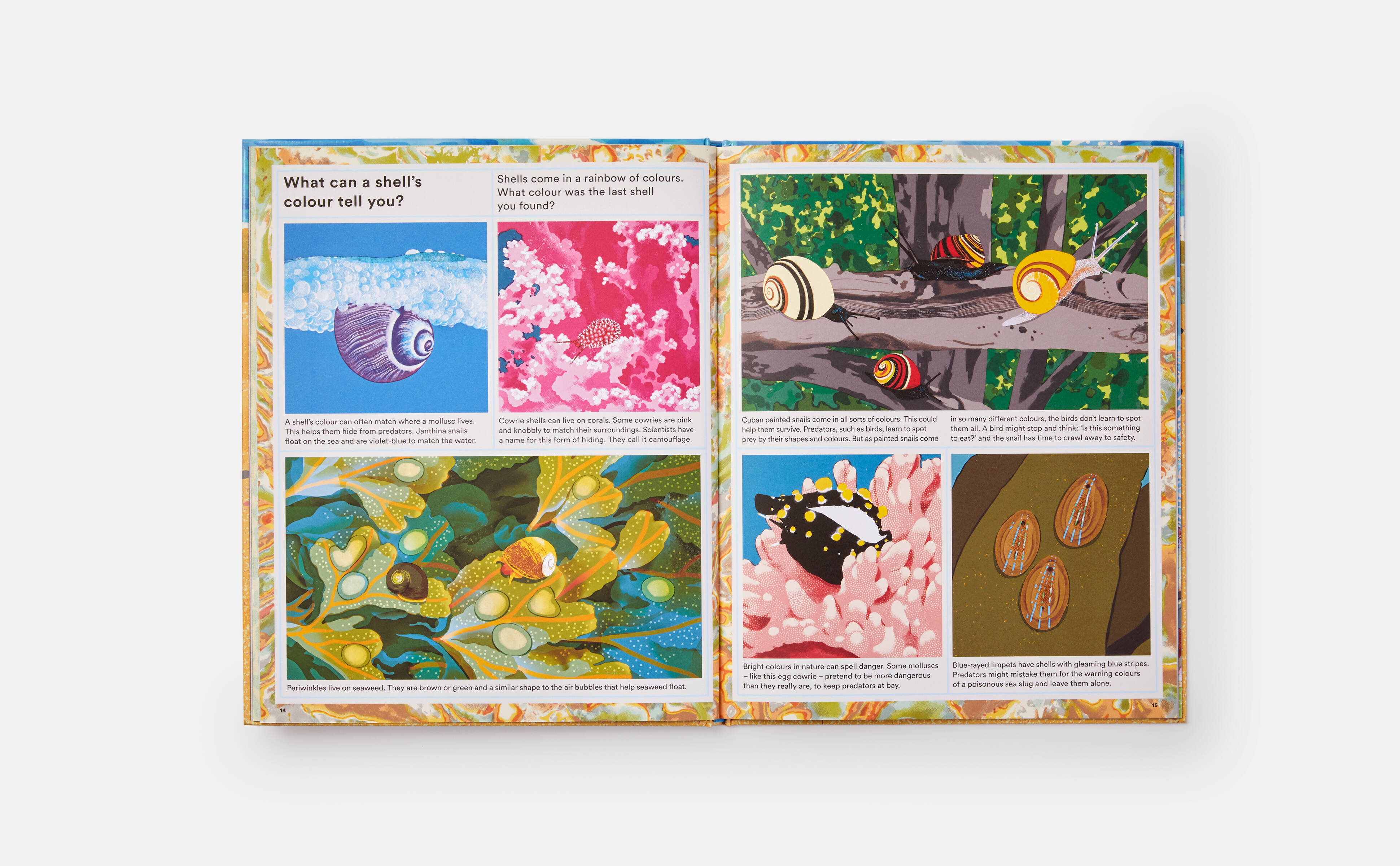
Pages from What A Shell Can Tell
One of the most unusual creatures in your book, the scaly foot snail, comes from a depth of the sea thought to be lifeless until recently. Yes. These scaly foot snails have scales on their feet. These scales, and these snails’ shells aren’t made of calcium carbonate, but iron; we don’t see that in any other animal. They were found in the deep ocean on these hydrothermal vents, miles below the surface in this ridiculously hostile environment, boiling hot temperatures and incredible pressures. Like many of these animals that live on these vents, they’re completely cut off from sunlight so they can’t live on seaweed or anything else because there’s no light. Instead they live off the chemical energy that comes out of these vents. There are bacteria that can use chemicals in the water to produce food and the whole ecosystem goes from there.
You’re also a scientific advisor to the charity Sea Changers. Where does the greatest threat to shellfish lie? For shells, acidification, which makes the animals in the book much more vulnerable. Take sea butterflies; these are tiny snails that flap their two wing-like feet to swim through the water. They have got very small, delicate shells. With more carbon dioxide being dissolved into the ocean changes the chemistry of the sea is changing, making it more acidic, and this is making it harder for these animals to make their shells, which makes their lives more difficult.
Sometimes we’re told shellfish are a good, sustainable source of animal protein. Is that correct, or is there more to it? It’s more complicated. The really sustainable options are ones that are being farmed in sustainable aways, especially species that don’t need feeding. One of the problems with some fishing farming, such as salmon, is that you’re catching fish from the ocean and feeding it to a farmed fish.
The good thing about mussels and oysters is that they feed themselves from plankton in the water, and you don’t need to give them medicines to keep them well; if you have a well placed farm, you generally have a healthy population; the impact on the environment is much lower. They can be run sustainably, sometimes alongside seaweed farms; that’s really exciting – a mini ecosystem in a farm. It’s not going to be the solution everywhere, but it’s an exciting form of food for the future. On the other hand, there is wild scallop dredging which can be very damaging; dredging is one of the types of fishing that’s really bad for the environment.
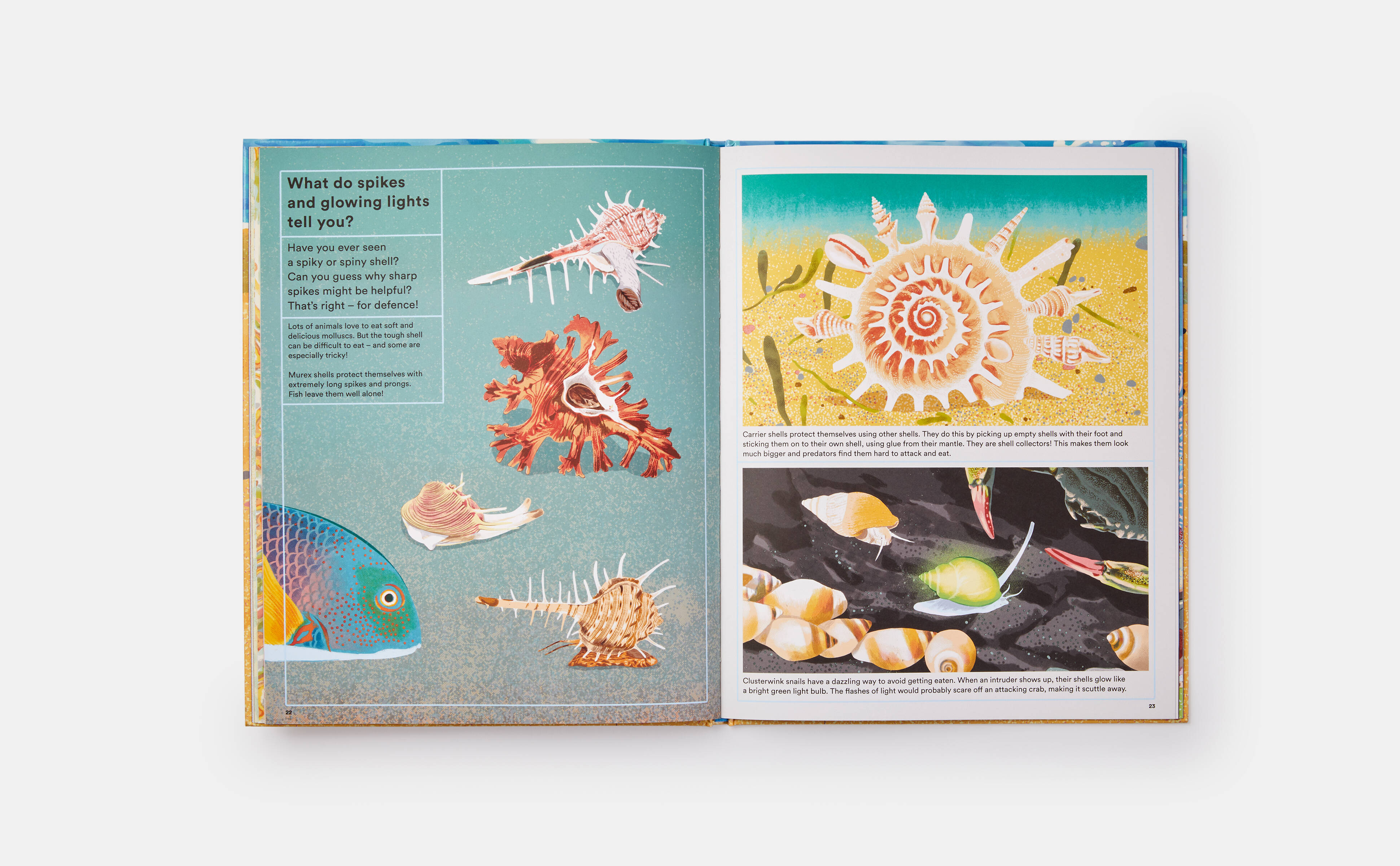
Pages from What A Shell Can Tell
Do you have shells on your desk right now? I do have shells on my desk. The one I like the most is a painted top shell, they’re pink and stripy and you can see the shiny layer of mother of pearl on the inside. They’re the ones I always love to find on rocky shores around Britain and France. I’ve got some tropical cowries from West Africa, and a box of shells from the Madagascar mangroves upstairs. So yes, I do have a few!
If parents and children go to the beach this summer, what sort of tips can you give them, when shell collecting, to really open up the world of marine science? The first thing to do is to have a look to see if you can find shells that have spirals in them. If you can, you've found snail shells. If you can find ones that look like fans or the open pages of a book you’ve found bivalves; that’s clams and mussels and so on. Get those, and you have one of each of the two main groups of the two shell-making molluscs.
If you can find a shell with a small, neat hole punched in it, you’ll have found a shell once belonging to an animal that came to a sticky end. You see, there are whelks and other animals that roam and around, find these shellfish, poke a hole in the shell with their rasping tongue and suck out the insides. It’s a bit gross, but it's all part of nature. And if you’re near a rock pool, look for snail trails. It’s a sign that the animals have moved around. You can also see where limpets have moved to and where their teeth have scraped the rock.
Follow a trail in the sand and you might find a snail at the end of it. If you're lifting rocks make sure you put them back. Don't take buckets home with you, leave some for the people after you; if you take a shell home, make sure there’s nothing living inside it. And of course take all your litter with you!
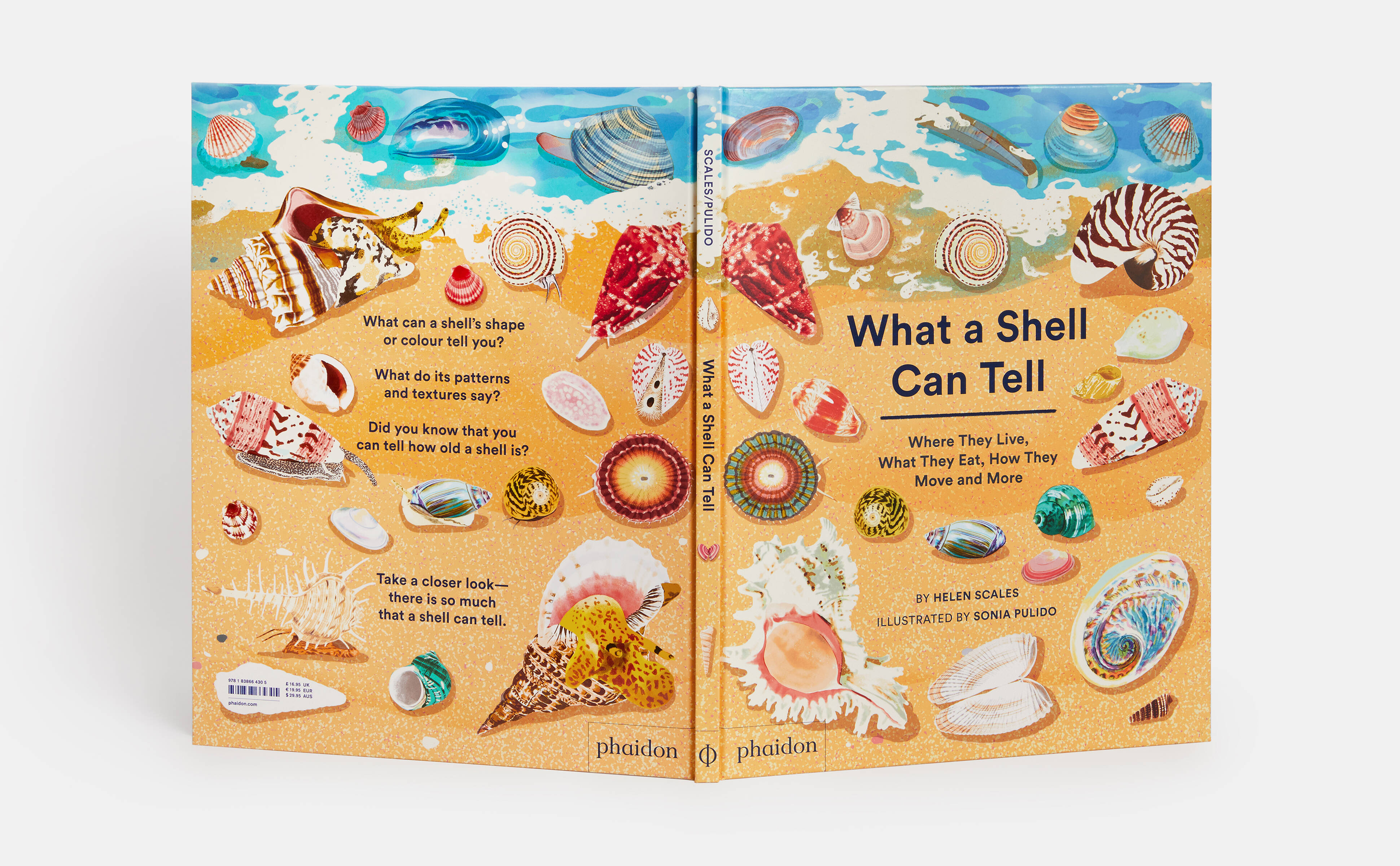
What A Shell Can Tell
For more from Dr Scales, order a copy of What A Shell Can Tell here.